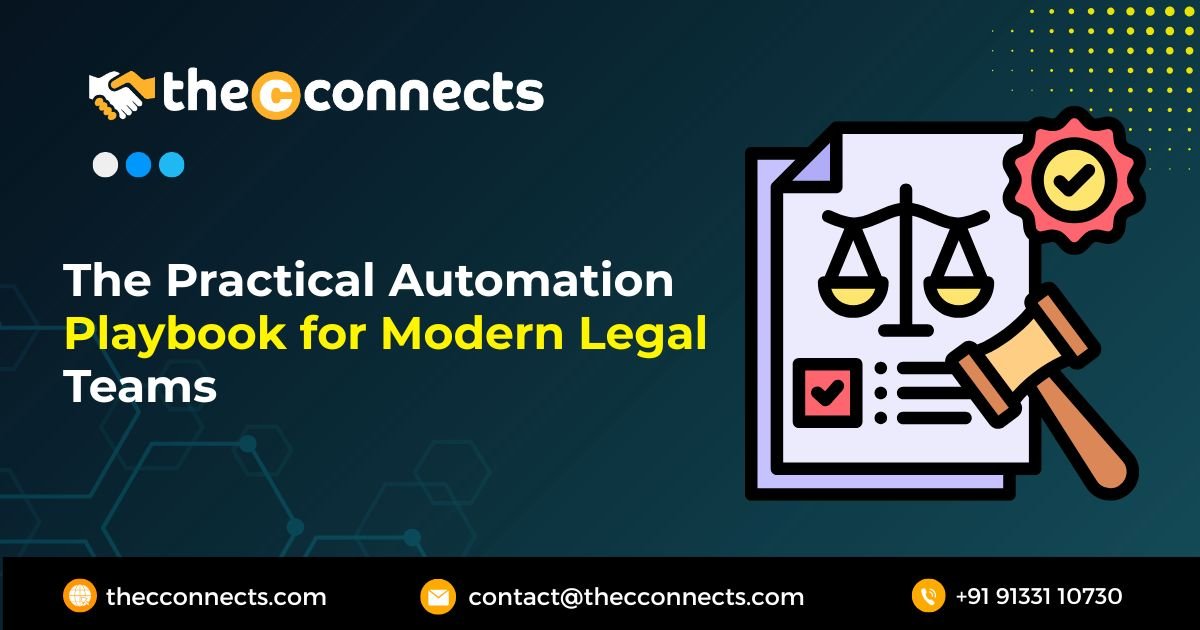Law firms are expected to move fast, manage a growing caseload, and still deliver sharp legal work with empathy. That’s hard to maintain when manual systems can’t keep up with nonstop inquiries, evidence uploads, and client follow-ups clogging the workflow.
A Legal Dive report noted that around 12 percent of lawyers spend roughly five hours a week on basic administrative chores. That’s valuable expertise getting drained on tasks that don’t require a law degree. It’s a clear sign that smarter operational design isn’t just helpful but necessary.
Forward-thinking firms are now building digital workflows that trim repetitive work, speed up documentation, and improve communication without pushing teams to exhaustion. This shift isn’t about swapping lawyers for software. It’s about giving professionals the space to think, question, plan, and advocate; instead of digging through inboxes and attachments.
Here’s how thoughtful automation can reshape both performance and capacity.
Automate Intake, but Keep the Human Element
Client intake often breaks down long before a case even starts. Many firms still rely on phone calls and manual follow-ups. A CBS42 report showed that more than one-third of calls to small and mid-sized firms go unanswered during normal business hours.
If someone builds up the courage to reach out and doesn’t get a response, they won’t wait; they’ll try another firm. The same study estimated that this gap alone contributes to about $109 billion in missed potential revenue each year. This shows how much value slips through the cracks before any legal work has even begun.
A thoughtful intake system can prevent that. Prospects show up through calls, referrals, ads, and social platforms, and someone has to gather details, confirm eligibility, and set expectations.
Intake software can handle the first layer by collecting information, flagging conflicts, and sorting cases so that the first human interaction is meaningful. A short, mobile-friendly form or chatbot can ease clients into the process while a trained professional steps in with full context instead of starting cold.
Use AI for First Drafts, Never Final Delivery
AI can help with the heavy lifting behind the scenes. It can draft discovery summaries, prepare first-pass client messages, highlight key information from depositions, and organize research. It can also tag evidence by dates, medical issues, or claim type, which saves hours of manual sorting.
But AI isn’t the legal brain. Think of it as a fast junior assistant that produces workable drafts in seconds while attorneys remain responsible for judgment, ethics, clarity, and personalization. Human thinking is still the part that shapes arguments and protects clients.
Pattern recognition is where AI becomes especially valuable. In large sets of related claims, it can uncover links or trends that might stay hidden during manual review.
Take the litigation involving the Paragard IUD, which began gaining traction around 2020. Now it has moved into multidistrict litigation. Around 3000 women reported complications such as breakage or perforation during removal.
Each story has a different medical history, timeline, and outcome. Many plaintiffs are still waiting to see how the discussions around the Paragard lawsuit settlement amounts evolve. AI can compare hundreds of data points across these cases to flag recurring issues sooner, giving legal teams stronger insight before building a strategy.
Status Updates Should Run Automatically
A big chunk of client communication is simply people asking, “Any update?” even when the answer is, “Not yet.” The real challenge is doing this quickly while also keeping communication secure.
Reports in the past year show a sharp rise in law-firm data breaches. Some firms have even faced class-action trouble afterward. A survey by the American Bar Association found that about 29 percent of firms reported a breach in 2023. Secure communication isn’t optional anymore.
Automation helps here. Status messages, milestone alerts, and timeline updates can run without manual typing. A secure client portal or CRM keeps sensitive information out of email and delivers updates automatically. A good system can notify clients when:
● A new document has been uploaded
● A deadline is approaching
● The case moves to a new stage
● The attorney adds a note that can be shared
This keeps clients informed without forcing someone on your team to repeat the same line hundreds of times. It also creates a communication trail that’s safe, reliable, and available whenever clients check in.
Map Your Automation Plan Like a Business Upgrade
Before rolling out any tool, build a clear plan instead of reacting to trends. Talk to your team to understand where work slows down and which tasks eat the most time. From there, decide what should be automated, what must stay human, and where technology can offer real leverage instead of novelty.
AI fits into this conversation, too, but it requires thoughtful rules. Recent industry insights show that many legal professionals still want strong human oversight, clearer boundaries, and internal policies before fully embracing AI tools.
Half of those who haven’t used AI worry about output quality and usefulness, and a smaller percentage have concerns tied to data security. Many also support the idea of industry ethics standards or even formal certification. These concerns don’t mean “don’t use AI.” They mean “use it with intention.”
Here’s a practical way to build your automation roadmap:
● Identify bottlenecks through honest team conversations
● Prioritize repetitive, time-heavy chores
● Choose tools that integrate well instead of chasing hype
● Test with a small group before rolling out to everyone
● Train with real files and real situations
● Document processes for future hires
● Review quarterly and refine
FAQs
Will automation replace lawyers?
No. Automation handles routine, repetitive tasks so lawyers can focus on judgment, strategy, negotiation, and client interaction. It removes low-value work, not the profession itself. Think of it as support that improves accuracy, speed, clarity, and mental bandwidth rather than replacing expertise.
What is court automation?
Court automation uses digital tools to handle tasks like filing, scheduling, fee payments, evidence storage, and document access. It replaces slow paper systems with faster electronic workflows, reducing delays and errors. The goal is smoother case movement, better transparency, and improved user access both inside and outside the courtroom.
What is a CRM in law firms?
A CRM (Client Relationship Management system) is a digital platform that organizes client information, communication history, intake details, and follow-ups. It also tracks appointments and case status in one place. It helps firms stay responsive, avoid missed opportunities, and maintain a consistent, professional experience from first contact to final resolution.
Overall, law firms can scale without feeling chaotic if they build systems that support clarity, speed, and human empathy. Automation isn’t cold or impersonal when used thoughtfully. It frees lawyers to do what they do best: think critically, offer reassurance, and fight for meaningful outcomes.
The firms that master internal operations now will earn stronger client trust over time. This matters even more in complex areas like product injury and medical device claims.
If you want, I can prepare a sample outline, headline options, or anchor text placements next.



